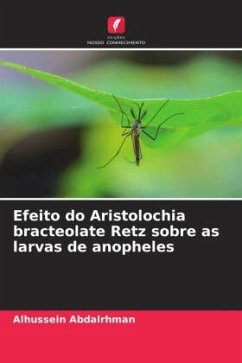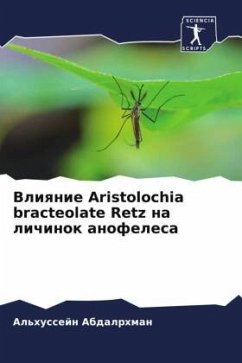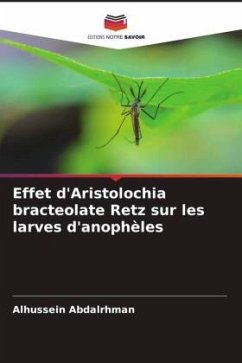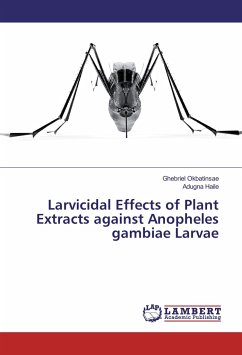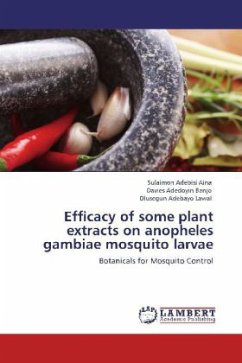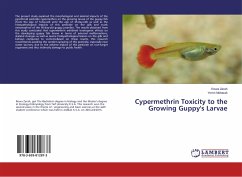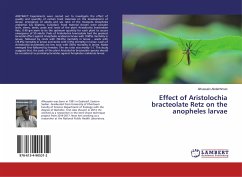
Effect of Aristolochia bracteolate Retz on the anopheles larvae
Versandkostenfrei!
Versandfertig in 6-10 Tagen
24,99 €
inkl. MwSt.

PAYBACK Punkte
12 °P sammeln!
ABSTRACT: Experiments were carried out to investigate the effect of quality and quantity of certain food materials on the development of larvae, emergence of adults and sex ratio of the mosquito Anopheles arabiensis Say (Diptera: Culicidae). Food material chosen were powder leafs, stems, seeds, pods and roots of the plant Aristolochia bracteolate Retz. 0.40 gm seem to be the optimum quantity for each plant to secure emergence of 50 adults. Pods of Aristolochia bracteolate had the greatest larvicidal effect against Anopheles arabiensis larvae with (100%) mortality in larvae, followed by roots w...
ABSTRACT: Experiments were carried out to investigate the effect of quality and quantity of certain food materials on the development of larvae, emergence of adults and sex ratio of the mosquito Anopheles arabiensis Say (Diptera: Culicidae). Food material chosen were powder leafs, stems, seeds, pods and roots of the plant Aristolochia bracteolate Retz. 0.40 gm seem to be the optimum quantity for each plant to secure emergence of 50 adults. Pods of Aristolochia bracteolate had the greatest larvicidal effect against Anopheles arabiensis larvae with (100%) mortality in larvae, followed by roots with (90.6%) mortality in larvae , seeds with (78.6%) mortality in larvae and stems with (72%) mortality in larvae. Leafs of Aristolochia bracteolate are low toxic with (30%) mortality in larvae. Males emerged first followed by females. The sex ratio was mostly 1:1. This study suggests that, the pods of the plant Aristolochia bracteolate species should be considered as promising larvicides against Anopheles arabiensis larvae.



